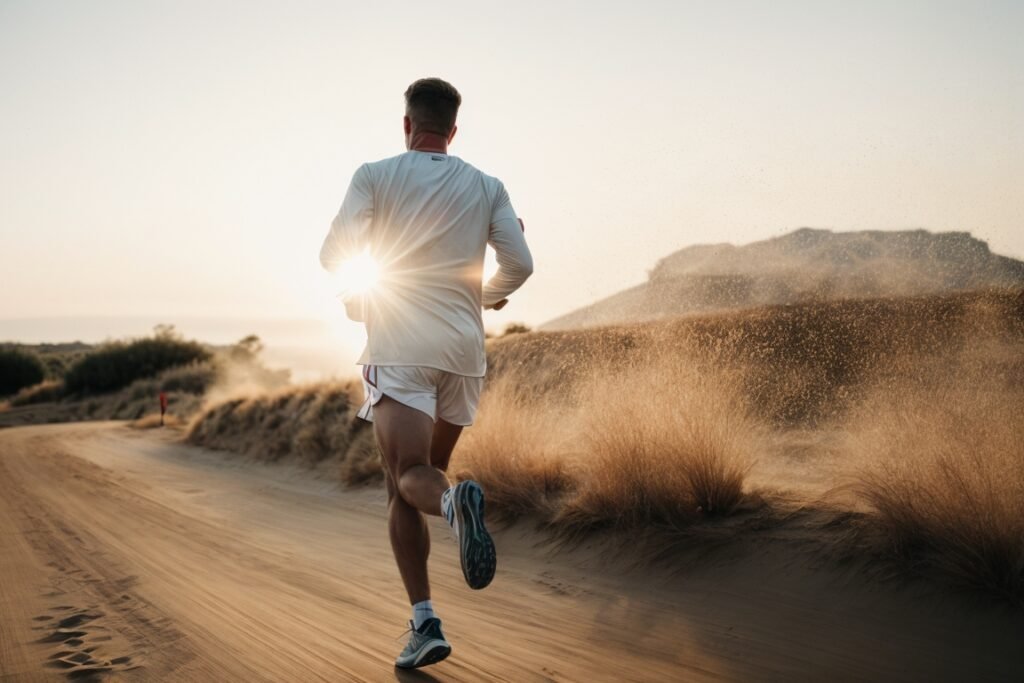
Nasal strips – they’re not just a fashion statement or a funky badge of honor to wear during your rigorous workouts. What these seemingly simple contraptions do is far more remarkable than meets the eye. They’re designed to open up your nostrils from the outside to allow better airflow, a concept as brilliantly simple as it is effective. I’ve covered the benefits of nose breathing in more detail here, but from my experience as a nose breather, these strips have been instrumental in promoting superior airflow during intensive physical activities, effectively reducing the struggle for breath. In the arduous terrain of a hiking trail or during an animated chase with my dogs, these strips have ensured a steady supply of oxygen, elevating my overall performance.
The idea behind nasal strips is rooted in the science of respiration and aerodynamics. By providing a mechanical way to “lift” the sides of your nose, nasal strips effectively expand your nostrils and allow more air to flow through. The result – more oxygen reaching your lungs, and subsequently, the rest of your body. Having nose-breathed for four years now, I’ve experienced firsthand the transformative effects it has had on my overall health. The increase in oxygen not only supports enhanced performance but also contributes to improved sleep. Using aids like moth tape and nose vents along with nasal strips, I’ve been able to take control of my breathing, and subsequently, my health.
The Science Behind Improved Respiration with Nasal Strips
Nasal strips, my fitness pals, have a simple yet significant role in promoting better respiration. Let’s break down how they work. Essentially, these strips adhere to the outside of the nose, creating a gentle outward pull that expands the nasal passages. This action increases the space within the nasal cavity, lower the resistance to airflow, and ultimately promotes more efficient nose breathing.
In addition to this immediate relief, it is worth mentioning how an increase in airflow can have enduring impacts on one’s health and physical capabilities. Each time I gear up for a run with my dogs or an intense workout routine, I trust these strips to help improve oxygen intake, thus providing the muscles with the oxygen they need for increased stamina and performance. It acts much like a good aftermarket air filter, for any car enthusiasts out there, and means I don’t have to work as hard to get the oxygen in I need. You can get by OK without it, but you notice the difference when you have it.
The Role of Nasal Strips in Physical Activities
While nose breathing offers numerous benefits, some individuals may find it challenging to maintain this technique consistently, especially during vigorous exercise. This is where nose tape comes into play.
Nose tape is a simple yet effective tool that helps individuals maintain proper nose breathing during physical activity. It is a breathable adhesive strip that is applied over the bridge of the nose, gently sealing the nostrils and encouraging airflow through the nasal passages.
By using nose tape, you can train yourself to breathe through your nose, even when the intensity of your workout increases. The tape acts as a gentle reminder to keep your mouth closed and focus on breathing deeply through your nose. With consistent practice, this can become a natural and effortless habit.
In addition to promoting nose breathing, nose tape also helps improve airflow and reduce the risk of snoring or sleep apnea. It can be particularly beneficial for individuals with deviated septum or other nasal obstructions, as it helps create a clear passage for air to flow through. Nose vents would be a better option for sleeping, more on that later, but nose strips will certainly do the job just fine as well.
Tips for Using Nose Tape
If you’re considering incorporating nose tape into your exercise routine, here are a few tips to get you started:
- Choose high-quality nose tape that is hypoallergenic and comfortable to wear. Most nose tape is fine, and there’s not much point to paying over the top for nose tape, it shouldn’t be expensive. My recommendation are these, but any half decent tape should work just fine.
- Ensure that your skin is clean and dry before applying the tape to maximize adhesion. If you already have a mild sweat on before trying to apply them, it might not stick very well.
- Test your limits before going all out. Nose tape will help you get more from your workout’s, but it’s not a magical cure then’s going to turn you into a super-human overnight.
Remember, nose tape is a tool to assist you in improving your breathing technique during exercise. It is not a substitute for proper training and conditioning. Practice patience and consistency, and over time, you will reap the benefits of nose breathing.
Nasal Strips and Exercise Recovery

Endurance training calls for utmost commitment, be it running in a park, hiking up a mountain, or challenging the treadmill at home. But tell me, – how many times have you found yourself gasping for air, feeling like you’re about to keel over? It’s a test of will-power to keep going sometimes, isn’t it?
We know now how nose strips help when exercising, but what about recovery?
Nose breathing plays a crucial role in recovery after exercise, offering several benefits that enhance overall well-being and performance. By breathing through the nose rather than the mouth, we can increase our uptake of oxygen, a vital component for muscle recovery. Nose breathing also helps maintain optimal levels of carbon dioxide in the blood, which can improve oxygen delivery to tired muscles, aiding in faster recovery. Additionally, this method of breathing promotes a more relaxed state by engaging the parasympathetic nervous system, which is essential for the body to heal and restore itself after physical exertion.
Nose strips can further assist in this recovery process. By gently opening the nasal passages, they enhance airflow, making nose breathing more efficient during and after exercise. This improved airflow ensures that the body receives adequate oxygen for muscle recovery and helps clear out carbon dioxide more effectively. Moreover, using nose strips can reduce breathing effort, making the recovery period more comfortable and efficient, allowing athletes and fitness enthusiasts to focus on relaxation and rejuvenation after their workouts.
I always struggled with recovery after very high intensity exercise, sometime taking up to 5 minutes to get my breathing under control. Anyone that regularly uses a curved treadmill will know the feeling, those things are the devils work! Since switching to nose breathing and using nose tape, my recovery time is around 60-90 seconds. It could be better, but i’m in my forties now and no spring chicken any more.
Comparing Nasal Strips with Other Breathing Aids
As mentioned above, I think nose tape is great, but you need to use the right tools for the job. So when it comes to sleeping, nose tape will be better than nothing, but using Nose Vents in combination with Mouth Tape is the better option. I’ve used nose tape plenty of times over night, but nose vents, which are gently inserted into the nasal cavities, is simply a better option for sleeping. I’ve covered the topic in more depth here, but ideally you want mouth tape, such as MyoTape that fits around the outside of the mouth, and nose vents, such as these. I’ll leave a link for MyoTape below.
Myotape UK – Myotape US – Discount code breathebetter5
It’s hard to go wrong with nose tape or nose vents, though it’s worth buying a multi-pack of vents to find the right size. Mouth tape is different though, and the only ones i recommend are from MyoTape, simply because they’re the only one that fits around the mouth and not over it. It’s directly available from Amazon, but it’s much cheaper to buy directly from the supplier using the links above, especially if buying 3 or more packs for free delivery.
Conclusion
Incorporating nose breathing into your exercise routine can have a profound impact on your overall well-being and performance. By utilizing nose tape as a supportive tool, you can enhance your ability to breathe efficiently through your nose, leading to improved oxygen uptake, better lung function, and increased endurance. Embrace the power of nose breathing and the benefits it can bring to your workouts, it really should be a game-changer.


Pingback: Nose Breathing & Environmental Factors: The Impact of Air Quality
I am sure this piece of writing has touched all the internet
users, its really really nice article on building up
new web site. https://Odessaforum.Biz.ua/
I am sure thjs piece of writing has touched all the internet users, its really
really nice article on building up new web site. https://Odessaforum.Biz.ua/